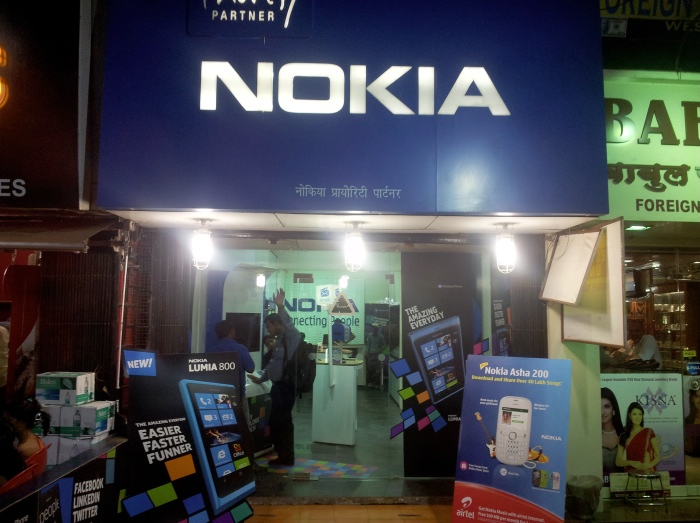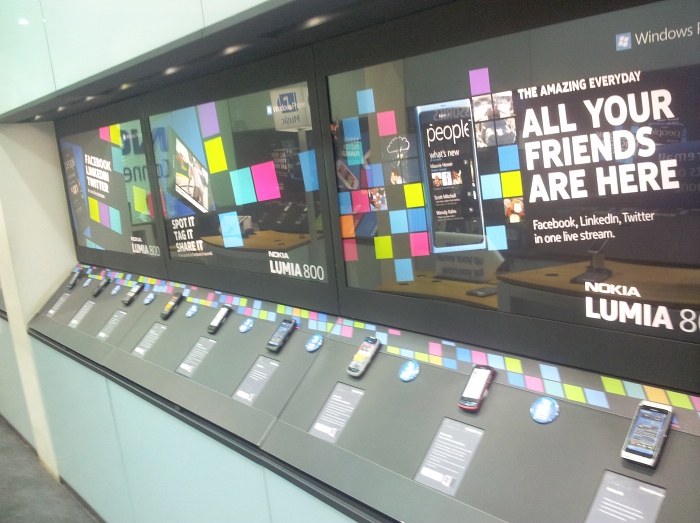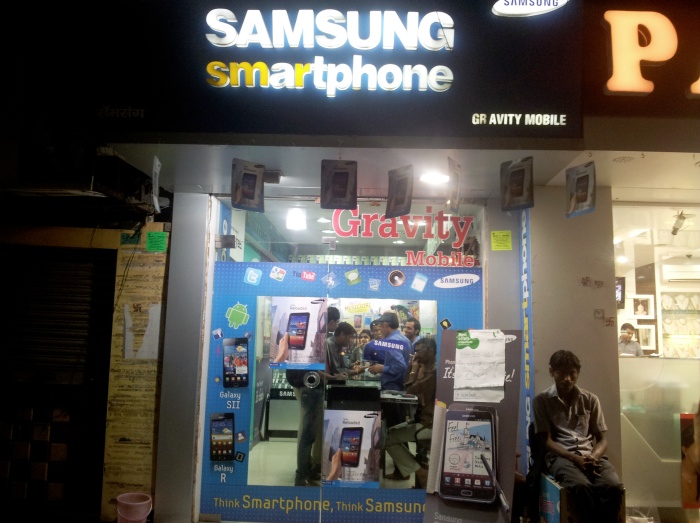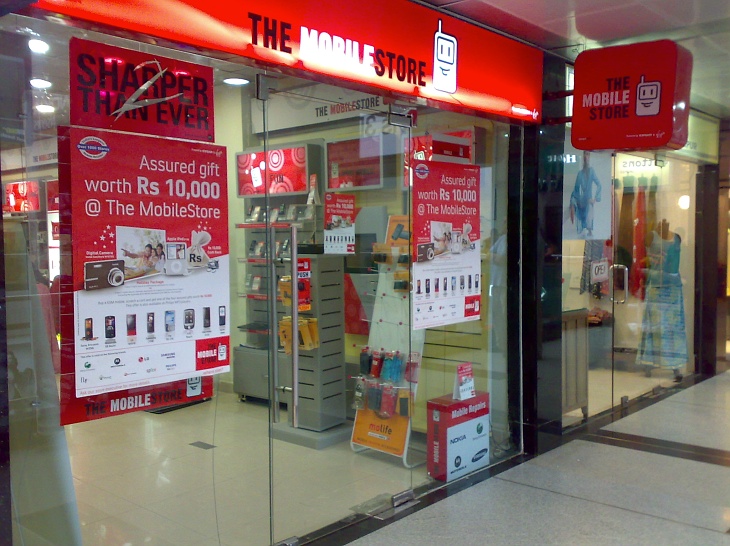
Aditya writes:
Introduction to the Indian market
2011 has been a very tough year for Symbian. Ever since Stephen Elop's "burning platform" memo was 'leaked', things have steadily gone downhill for Symbian. However, Symbian's decline is happening at different rates in different markets.
My recent visit to Nokia World showed me the reality of the UK mobile phone market, giving me an interesting insight about how people there look at the industry. At a simple level, India isn't that different, mobile phones are present everywhere. But, as you'll read, the psyche of the consumer could not be further apart.
The Indian mobile phone market and telecom industry is enormous, both in financial terms and in terms of the number of customers. In India there are nearly 900 million mobile phones in use (94% market penetration), compared to 330 million in the US (103% market penetration) and 76 million in the UK (122% market pentration). And the market is growing too - Gartner estimates that 213 million devices were sold in 2011 and this will increase to 322 million by 2015. The UK and the US are expected to have relatively flat sales at around 30 million and 15 million respectively.
But even more than the numbers might suggest, the fundamentals of the market are quite different in India. How different? Here’s a snapshot:
- Apple, which is so big in the US and UK, is a minnow in India and a niche player at best.
- Nokia, which has almost no marketshare in the US, is a major player here.
- The UK and the US are smartphone centric markets, while India sells some of the cheapest phones and the most expensive as well.
- India has an astounding 15 operators, as against just 4-5 elsewhere. None of the 15 is an MVNO and none of them offer devices on a subsidy.
- Over 90% of Indian subscribers are prepaid or ‘pay as you go’ customers.
- Call rates are much lower. Rs.80 (£1) will give you a minimum of 267 minutes of talk time.
- Indians do not pay for receiving calls and SMSes at all, even when roaming within the country (unlike the USA, famously).
- Mobile phones in India are as much a part of one’s appearance as good clothes are. They are material indicators of one’s status in society and economic wellbeing.
- The Indian market is not uniform. The north of the country behaves completely differently from the south and each region displays unique characteristics. What works in one state might not work in another.
- Camera, music player and battery life are key factors influencing the buying decision, besides brand.
One of the points I want to highlight from the above list is that there are no handset subsidies in India. Consumers make an outright purchase of the handset he or she is going to use. That’s right! We actually pay the full retail price for the smartphone that you (in the UK) get on subsidy from your carrier. This means that the iPhone or the Samsung Galaxy S2 or even the Nokia Lumia and other devices are bought outright as against a small fee and a monthly commitment. As a consequence, the operators are not as strong as the handset manufacturers. Because there's no handset subsidy, their influencing power is limited. The operator merely serves to provide connectivity and not devices.
Mobile phones in the Indian market are available from as low as £10-£13. These are not on contract but outright purchase prices. They are decent phones for the price and come with warranty as well. In fact the cheapest Nokia is priced in the vicinity of the £13 mark.

Nokia Series 40 and Nokia Symbian in India
The market for Nokia's Series 40 devices is big and Nokia is doing a good job at continuously providing features and improvements to users at a competitive price point. A typical Series 40 device will start off from Rs.2000 (approx. £25). This market is what will drive the numbers for Nokia. These phones will continue to provide value to people who want a simple phone or cannot afford an expensive phone. Another factor that is helping the sales of these phones is the goodwill the brand enjoys. People are willing to buy a recognized and trusted brand rather than an Indian brand whose devices aren’t as good as a Nokia’s.
However, the situation is not quite so rosy for Nokia's Symbian devices. At a price point of Rs.7000 to Rs.16000 there is a lot of competition and there are a lot of devices available. Android and Symbian are very much head to head, with BlackBerry being the third player in the game.
While most contend that Android is emerging as the top choice, I feel the market is still open. Symbian devices in India are overwhelmingly available in this price bracket, with a few exceptions, namely the N8, X7, C7/701 and the E7.
Android seems like the populist choice, driven more by the adoption of it at the top end of the market. But it has its disadvantages as well and they are more pronounced in this segment.
- Android development is moving at a rapid pace and that pace is too much for devices in this price bracket.
- Android’s true experience is best had on 1GHz and above clocked processors with ample RAM. Devices in this segment are mostly powered by 600 to 800MHz processors, where Android isn’t as good.
- When it comes to battery life, Android still lags behind Symbian’s power management solutions.
- Android still remains a bit complicated as a platform solution for a majority of the audience in India.
I’ve seen many users complain of battery life on the devices and about build quality as well. The chief reason for people complaining about battery life is the lack of knowledge on how to exit an app. I’ve overheard so many times about how their Android device becomes slow after a while and how the battery life also becomes poor.
These things point to only one thing – lack of knowhow about how Android is designed and works. The educated folks who have access to internet and know their way around might be able to tackle these issues and even push the boundaries of their basic Android phone, but for a large set of people this is a hurdle and a headache. Most of the users in this segment are looking for sturdy and reliable devices that will work without too many hassles. A device they won’t have to change too often.
This is where Symbian holds an advantage.
- Symbian development isn’t being stretched on the top; it is a mature platform and has quite a few functionalities built in.
- Symbian Belle devices are smooth even on 680MHz processors.
- Most of the new Symbian devices are already running a 1GHz processor.
- Symbian devices are known to be efficient when it comes to power management. The N8 on 3G or HSDPA can easily do 10-12 hours with moderate-heavy usage in India.
- Symbian is simpler and has a shorter learning curve as compared to Android. It has elements familiar to a user moving up the ladder from a budget device.
As things stand, currently Symbian is definitely a better choice for smartphones in this price range in India. The user experience on a Symbian Belle device is now much improved and mimics Android (the pull down status bar). The widgets have also improved and they look more user-friendly and appealing.
In India, looks and appearance play an important role and the new UI refresh, Belle is just what the doctor ordered. People in the metro cities (8 major and important cities in India) and other tier-1 cities may have begun shifting to Android. However, Symbian has not vanished from there yet and I’d contend that it may even make a small comeback.
Barring the metros and tier-1 and a few tier-2 cities, the depth of knowledge is not high about platforms amongst the populace. It might have heard of Android and know it’s something from Google and perhaos that the current version is Gingerbread. Tier-2 cities and smaller towns and villages are where Symbian holds a good chance. A lot of people in these places still have a strong positive attachment with the Nokia brand and they are beginning to move up the ladder. They are increasingly exploring options. For them Nokia is familiar, almost reassuring in a way.
The new touchscreen devices in these places are the best things to get them started on. An Android phone in these parts of the country would only confuse them. People in these places are not as savvy as we think. A majority of the people here aren’t that well educated and many of them cannot afford to take ‘risks’ when it comes to expensive items - the mobile phone being one of them. So they will turn to something they are familiar with or have heard of.
Now these things might seem very old school for a typical AAS and AAWP reader, but this is a reality in India. Research and recommendations are more prevalent in the urban areas when it comes to purchasing a phone and this is evident even more so in the cities and towns with high tele-density.
However, Symbian phones can’t sell by themselves or on just the basis of the brand. Strong marketing and advertising push is needed to remind people of this bond and the familiarity. After all, it’s not as if competition is non-existent in these places.
So what does Symbian need to be able to survive and thrive?
- Specs – Highlighting key specifications of the product, like a 5 megapixel camera, big battery life, loud speakers, processor speed, etc.
- Apps – Show how apps are available on these phones and that one can do a lot more than just take photow or listen to music. A lot of the people in towns know that they can add apps and do more with a smartphone.
- Events – By organizing small events at local shops (somewhat of an awareness drive) where people with a Nokia phone can come and get apps installed or update the Maps on their Nokia phone.
- Roadshows – Nothing attracts public attention like a roadshow, showcasing the new Nokia Symbian phones and allowing people to have a feel of it will play a big role in creating increased visibility for the phone.
It is also important to understand that there are large regional variations within India, with consumer purchase decisions driven by different factors. For example, I’ve seen people prefer expensive and big phones in the north, especially in the NCR (National Capital Region). For them, the phone should be big and expensive, because it’s a sign of prosperity. By contrast, come down to west and the south of the country and people are looking at getting the best deal. Even a saving of Rs.50 at another shop a couple of kilometres away and people are likely to prefer that place to the one they are at. Here it is all about getting the most bang for the buck!

Phone shops in India
India has three distinct shopping formats from where a mobile phone can be purchased: a regular stand-alone outlet, a branded store (part of a large retail chain) and an online store.
Now this is where it gets tricky. A large portion of the market is unorganized, i.e. single stand-alone outlets. These, known as 'mom and pop' shops, are places from where most people buy their phones. The reasons are somewhat similar to why you go to a branded store in the US or UK.
These shops provide better customer service - if you are a regular then they’ll greet you and even give you a discount on your purchase if you ask nicely. You can even pick a phone from them and pay them later in a few days. These stores will go out of their way to provide you the best prices and will even arrange for a model if they don’t have it or if it’s not available. These stores work with a lot of co-ordination amongst themselves, despite being competitors. These stores also will buy and sell used phones.

Typical 'mom and pop' store
Since they aren’t run by a group, they are more flexible and will compete with each other to offer the best prices. These stores are also less likely to fool the customer - call it ethics or the fact that they don’t want to be hassled if something goes wrong with the phone that they suggested. Due to their cost structures these stores are able to undercut the retail stores by quite a margin, sometimes by as much as Rs.2000.
Then you have the modern retail stores, which are much like the Carphone Warehouse and Phone4U stores found in the UK. These retail stores have different pricing structures because of the incentives laid out by the manufacturers and their higher operating overheads. As a general rule, these stores are always more expensive than the 'mom and pop' store down the road and they always advise you to buy phones they have or the ones for which there are higher commissions. In addition, these stores usually aren’t as warm and friendly as the neighbourhood mobile store. So there’s no buying now and paying later and definitely no grey market handsets.
In the next few years, they are expected to absorb the ‘unorganized trade’, through buyouts and franchise agreements. Though I think it will be a while before they replace the neighbourhood mom and pop store.
 Typical modern retail store
Typical modern retail store
The last format, and one of the fast growing this year, has been online. The number of ecommerce sites from where you can buy a phone today in India is truly staggering. These online stores offer great discounts and price the phones aggressively. Delivery is quick and includes the option to pay at the door in cash. 2011 has seen a lot of people log on to an online store and buy their phone from the internet. It’s sometimes easier to find that odd phone model online and order it than it is to search the physical stores.
However, what’s really helping the growth of online phone stores is that they offer the right ambience when it comes to buying. No annoying salesman, specs are all there to see, plus colour options and a list of accessories that goes with the phone. These online stores also keep a wide variety of phones in stock. With inventory costs being low and delivery times quick (2-3 days is normal and free) it’s easy for people to look at all sorts of options.
Online shopping is becoming more popular, but for it to become truly successful there needs to be greater penetration of internet and PCs. With only around 13.13 million broadband connections in India, this could take some time.
Concluding thoughts
This is a small snapshot of the Indian market. I’ve tried to cover what I consider to be the major themes. Consider this as just a peek into the Indian market, the consumer mind here, Symbian in India and the retail industry.
Thanks, Aditya! (editor of worldofphones.net), follow him on Twitter: @adityasinghvi.
